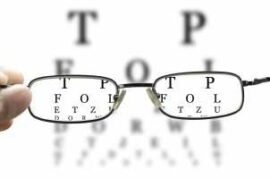Posted by:
Eyes on Rosemont
in What is Vision Therapy
The goal of vision therapy is to treat vision problems that cannot be fully addressed through eyeglasses, contact lenses or surgery. For example, studies show that vision therapy may be beneficial for addressing eyestrain and other issues that can affect a child’s reading abilities. The human brain has significant neuroplasticity, which means it can change […]
Read
More
Posted by:
Eyes on Rosemont
in What is Vision Therapy
Vision therapy, which is also known as vision training or visual training, is an individualized treatment program that can help identify and correct perceptual-cognitive deficiencies that are impacting visual learning, focus, and concentration. Vision Therapy for Children: Checklist While individuals of all ages can benefit from vision therapy, it may be especially helpful for young […]
Read
More
Posted by:
Eyes on Rosemont
in Refractive Disorders, We Can Help With
Myopia, or nearsightedness, means that your eyes can see close objects clearly but struggle to see things in the distance. Nearly 30 percent of Americans are nearsighted. This condition usually develops in children and teenagers, up to about the age of 20. A teacher or parent might notice a child squinting at the chalkboard or […]
Read
More
Posted by:
Eyes on Rosemont
in Refractive Disorders, We Can Help With
There are several types of refractive surgery available to correct vision problems caused by refractive errors, including: LASIK (laser-assisted in situ keratomileusis) Custom or bladeless LASIK Photorefractive keratectomy (PRK) Laser epithelial keratomileusis (LASEK) Epi-LASIK Conductive Keratoplasty (CK) Phakic Intraocular Lenses (IOLs) Refractive Lens Exchange (Clear Lens Extraction) Most of these procedures involve reshaping the curvature […]
Read
More
Posted by:
Eyes on Rosemont
in Refractive Disorders, We Can Help With
A normal cornea — the clear front covering of your eye — has a round curve, like a basketball. However, many people have an irregularly shaped cornea while others have an irregularly curved lens. Both cases can cause light that enters the eye to bend the wrong way, causing blurry vision. This disorder is called […]
Read
More
Posted by:
Eyes on Rosemont
in Refractive Disorders, We Can Help With
People with hyperopia, also known as farsightedness, can usually see objects in the distance, but their close vision is blurry. Symptoms of untreated hyperopia include: Difficulty concentrating on near work, such as reading Eye strain Headaches after reading or other activities involving close focus Aching, burning eyes Irritability from concentrating on tasks In children, eyes […]
Read
More
Posted by:
Eyes on Rosemont
in Glaucoma, We Can Help With
Treatment for glaucoma often begins with medicated eye drops. The goal of these medications is to lower the pressure in the eye (intraocular pressure) and prevent damage to the optic nerve. To gain the most benefits of these medications, use them exactly as prescribed by your eye doctor. Sometimes your doctor may prescribe more than […]
Read
More
Posted by:
Eyes on Rosemont
in Glaucoma, We Can Help With
Glaucoma is a condition characterized by excessive pressure in the eye, or intraocular pressure. This irregularly high pressure is due to a buildup of fluid in the eye. As intraocular pressure increases, it can compress the eye’s optic nerve, eventually leading to vision loss. Around 3 million people in the United States have glaucoma; although […]
Read
More
Posted by:
Eyes on Rosemont
in Glaucoma, We Can Help With
The iStent Trabecular Micro-Bypass is a surgical device that is available for use in treating patients with mild-to-moderate open-angle glaucoma. Glaucoma is characterized by an excessive accumulation of fluid inside the eye, which leads to an increase in the inner eye pressure (intraocular pressure). This can damage the optic nerve and lead to a gradual […]
Read
More
Posted by:
Eyes on Rosemont
in Corneal Disorders, Disorders, We Can Help With
While keratoconus can happen at any stage of life, young people between the ages of 10 and 25 are most likely to develop this disorder. For individuals with keratoconus, their cornea, the clear layer in the front of your eye, gradually thins and begins to bulge outward. Keratoconus typically causes nearsightedness and astigmatism in both […]
Read
More










